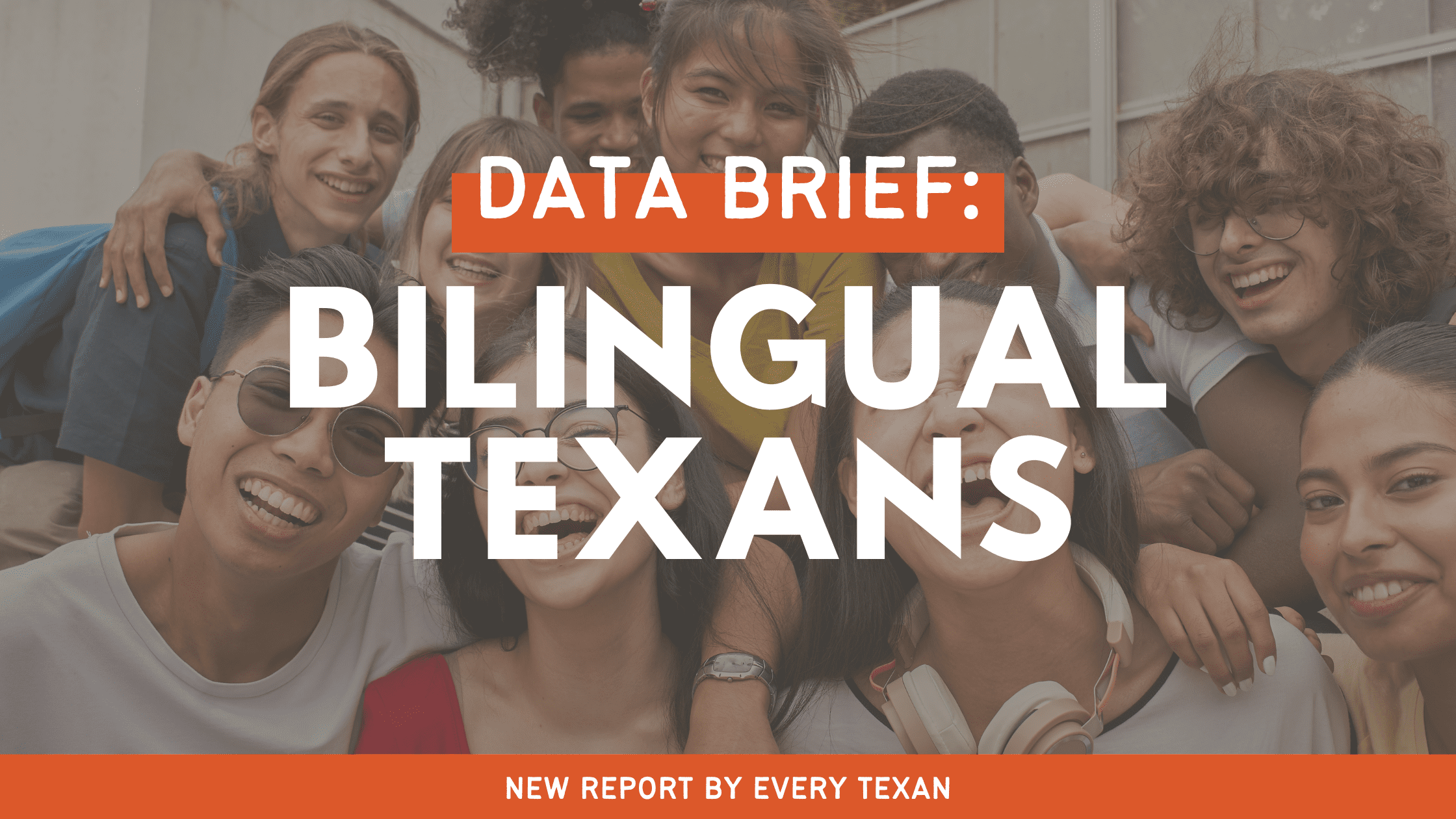Being a Texan means having pride in your identity and the vast opportunities in our state’s diversity. Texas’ rich cultural diversity makes it a desirable home for many, while also playing a key role in our economic growth. Considering the more than 9 million people who speak a language other than English in Texas, – 6 million of whom are bilingual – it’s necessary to study the trends surrounding the languages Texans speak. These data sets offer insight into the opportunities these populations lack or possess in comparison to their English monolingual counterparts, thereby guiding policy decisions to address any identified disparities.
Method
This data brief explores the outcomes experienced by the various language speakers in Texas. For context, the bilingual population is calculated by taking the intersection of two variables: “speaks language other than English at home” and reports English proficiency “well” or “very well.” The English monolingual population reports only being able to speak English. The non-English, monolingual group speaks English “not well” or “not at all,” and reports speaking a language other than English at home.
Who Are Bilingual Texans?
Language diversity across the state provides different trends to explore. Explore the geographic distribution and household structures by language below.
Language Isolation
The linguistically-isolated population in Texas consists of households where:
- No person age 14+ speaks only English at home, or
- Households where no person age 14+ who speaks a language other than English at home also speaks English “very well.”
This population’s cultural richness is an asset to the state, yet these Texans also face unique social and economic challenges. Exploring these different characteristics and trends is crucial to better identifying local and state support for these linguistically isolated communities.
Economic Well-Being of Linguistically Diverse Texans
Multilingualism is a crucial part of the Texas economy. With such a diverse landscape, multilingual employees are able to cater linguistically and culturally to different clientele. Although reports showcase the benefits that dual speakers bring to the workforce, it’s important to dive deep into Texas trends to explore how we compare to the national landscape.
Even though bilingualism is considered an asset in many workplaces, there seems to be a slight disproportionate benefit based on what types of languages someone speaks. It is also important to note that the economic benefit of bilingualism seems to be context-dependent; jobs that don’t require higher education may be more receptive to those who speak another language because they are able to interact with a larger customer base. It could also be that bilingual speakers – specifically immigrants – bring valuable skill sets that aren’t captured by formal education, whereas jobs that require advanced degrees likely have English as their dominant language and use communication skills that benefit English monolinguals.
Nevertheless, dual speakers play a significant role in our cultural landscape and economic growth with their unique skill set, one that must be preserved through education policy. Every Texan supports policy proposals that involve hiring and retaining bilingual teachers and programs.
A Texas for Everyone
At Every Texan, we believe the most effective way to ensure every Texan has access to good health care, education, and jobs is to strengthen public policy. In our exploration of Texas’ language landscape, the data in this brief provide valuable insight into specific policy priority areas. For example, we uncover disparities in health care coverage for bilinguals and non-English monolinguals compared to their English monolingual counterparts – not a new data trend, but one that’s grown over time in part due to Texas’ Medicaid unwinding. National reports conclude that the language barrier leads to a greater likelihood of food insecurity for those with limited or nonexistent English-speaking abilities.
Creating a more prosperous state means investing in every Texan at every crossroads. The diversity of language populations in Texas will only continue to grow, along with the disparities, unless policy is implemented to change course. To give every Texan the best opportunity to care for themselves and their families, policy intervention is necessary to make public resources more accessible without diluting the diversity these groups bring to our growing state.
